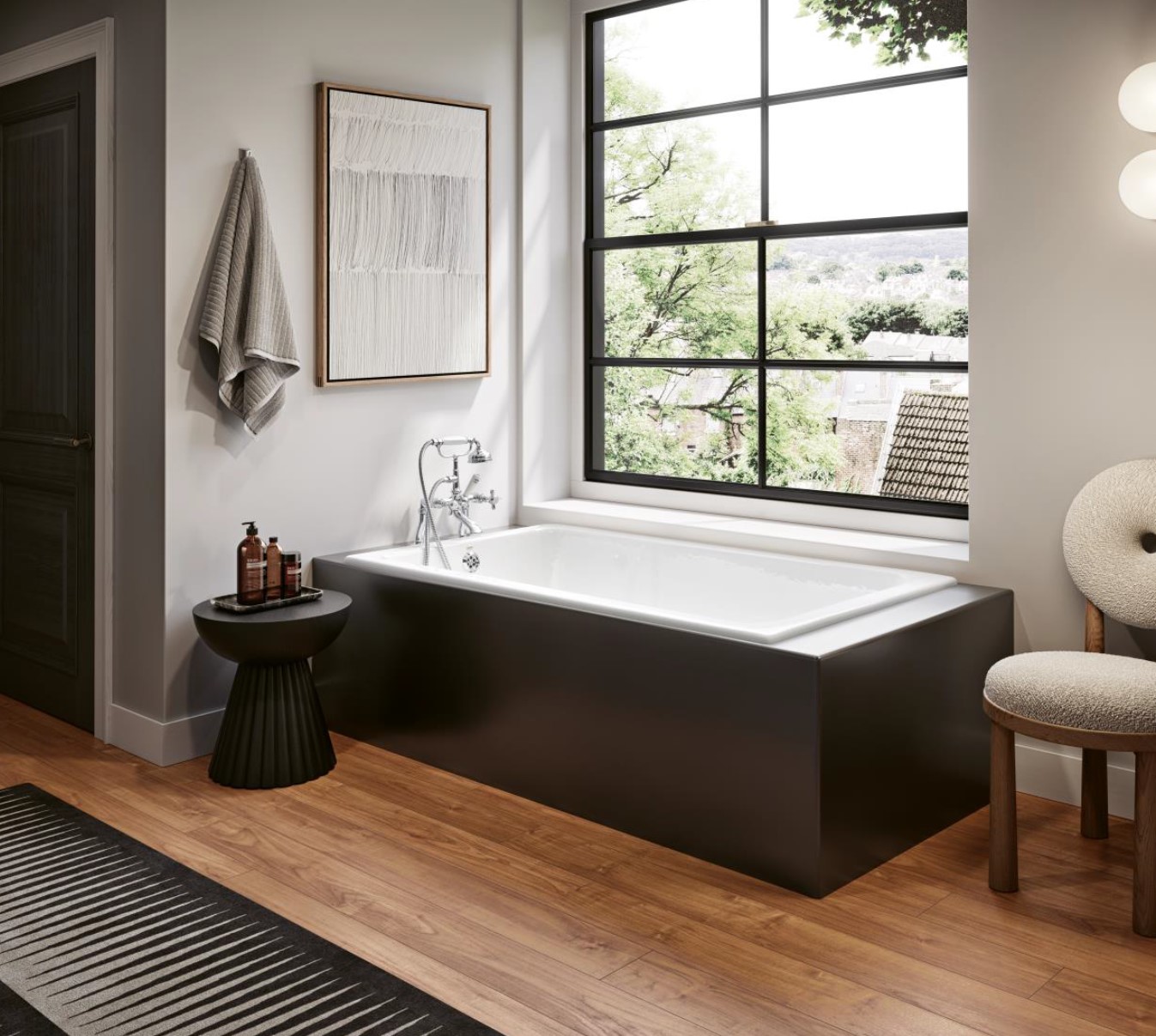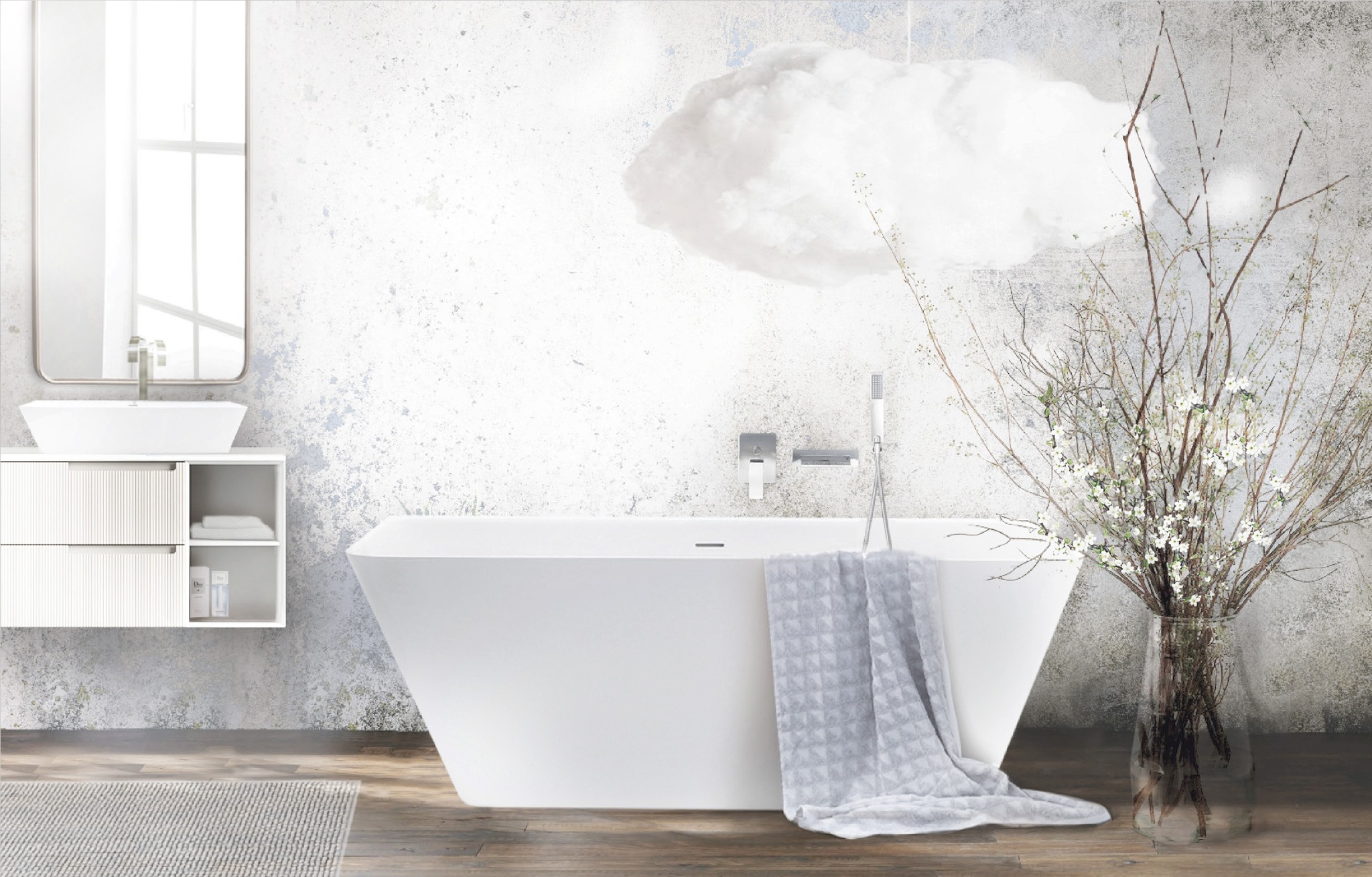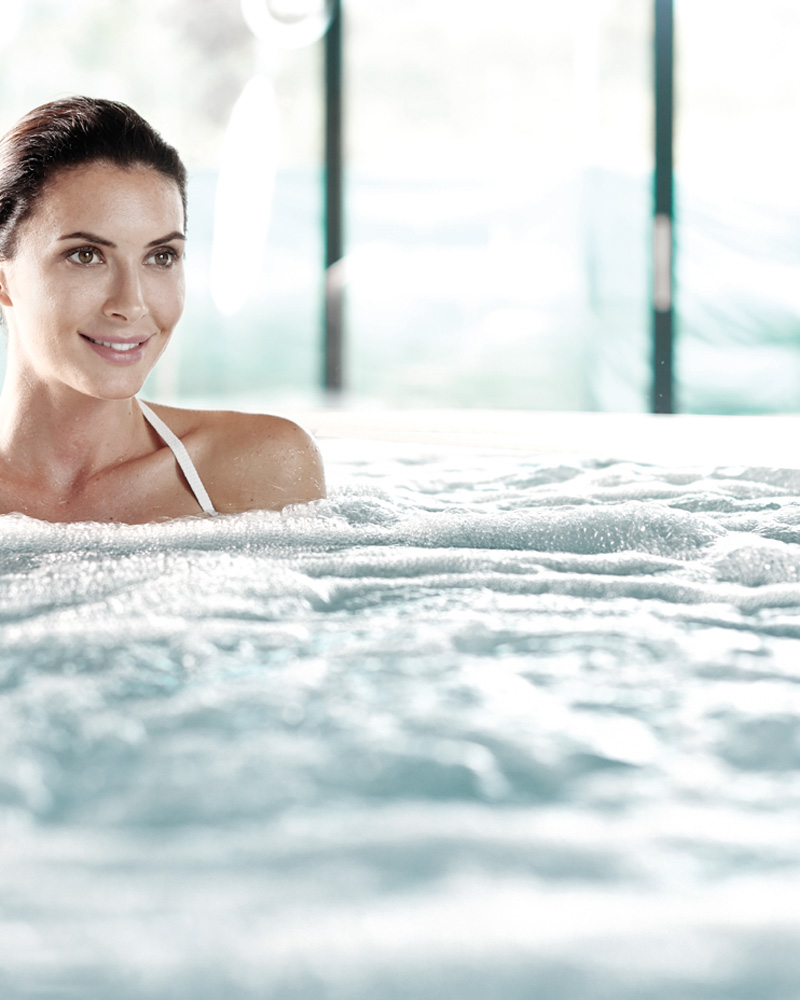Choosing a suitable bathtub
Choosing the perfect bathtub is often an overwhelming task that baffles many. The plethora of options available in terms of style, size, color, and functionality can turn this seemingly straightforward decision into a complicated endeavor. While many considerations come into play, perhaps none is as critical as the material used to construct the bathtub. The choice of material not only dictates the aesthetics and comfort but also impacts the durability, ease of maintenance, and heat-retaining capabilities of the tub.
Why Is Bathtub Material Choice Important?
The significance of material choice in bathtubs cannot be overstated. Material affects the longevity of the bathtub, often serving as a predictor of how many years of service you can expect. Maintenance and ease of cleaning are directly correlated with the material; some materials require rigorous cleaning regimes, while others are more forgiving. Additionally, the material choice also shapes the aesthetic landscape of your bathroom. A cast iron bathtub can evoke an old-world charm, while an acrylic or solid surface tub may provide a more contemporary feel. Comfort is another overlooked factor; some materials feel warm to the touch, and others do an excellent job at retaining heat, thereby affecting the quality of your bathing experience. So let’s dive into the different types of bathtub materials and examine them closely.
Cast Iron Bathtubs: Elegance Meets Durability
Pros
Durability and Longevity
The outstanding feature of cast iron bathtubs is their unparalleled durability. Constructed from heavy-duty iron coated with a layer of enamel, these bathtubs are built to last, often for generations. The enamel layer serves as a formidable barrier against scratching, staining, and chipping.
Heat Retention
The high heat-retaining properties of cast iron make for an exceptionally comforting bath. The material holds onto the heat for an extended period, allowing you to soak longer without the need to add hot water continually.
Aesthetic Flexibility
One of the lesser-known advantages is the wide range of styles, designs, and finishes available. You could opt for a classic clawfoot design to imbue your bathroom with a vintage look, or choose a sleeker, more modern design. Customizable elements such as faucet holes, ornate curtain frames, and unique finishes offer endless possibilities.
Sound Insulation
Cast iron is excellent at dampening sounds. Unlike lighter materials that might create a “drumming” noise upon contact with water, cast iron tubs are much quieter.
Disadvantages
Weight and Installation
The major drawback is the weight. These tubs are exceedingly heavy, often requiring reinforced flooring and making them less suitable for upstairs bathrooms or apartment living.
Price
Another downside is the price tag, as these tend to be on the expensive side compared to other types of tubs.
Limited Shapes
While there are many design options, the heavy weight of the material limits the shapes that can be achieved, meaning you might not find an exact match for certain specific bathroom dimensions or designs.
Modern Aesthetics with Traditional Qualities
Built-in cast iron bathtubs offer a contemporary look without sacrificing the traditional advantages of cast iron material. Their sleek and modern design effortlessly blends into contemporary bathroom décors while retaining the timeless qualities of cast iron, such as durability and heat retention.
Versatile Sizing
Built-in cast iron baths models offer a wide range of dimensions. Sizes can vary from compact 1200 x 700mm options to expansive 800 x 1810mm models, making it easier to find a tub that fits your specific bathroom space while offering the benefits of a cast iron.
Enameled Surface
Just like their freestanding counterparts, built-in cast iron bathtubs come with an enameled surface. This feature provides the tub with a long-lasting, durable finish that is easy to clean and maintain.
Confusion with Steel Baths
It’s not uncommon for built-in cast iron bathtubs to be mistaken for steel baths, especially given their modern appearance. However, it’s essential to recognize that cast iron tubs are on an entirely different level in terms of durability, filling silence and heat retention. While steel baths might offer a similar look, they can’t match the longevity and other qualities of cast iron.
Solid Surface Bathtubs / Cast Stone Bathtubs: An Amalgam of Style and Function
Pros
Exceptional Durability
Solid surface bathtubs are crafted from a blend of natural minerals and acrylic resins, resulting in a highly durable and long-lasting material. Many manufacturers back their solid surface tubs with a 25-year warranty, a testament to their faith in the material’s durability.
UV Resistance
Cast Stone Bathtubs are resilient to a wide range of environmental conditions, including prolonged exposure to sunlight, making them an excellent choice for installation to bathrooms with windows from floor to ceiling.
Mat Finish for Solid Surface / Cast Stone Bathtubs
Mat finishes offer a unique aesthetic touch to solid surface or cast stone bathtubs. This non-reflective surface not only provides a modern look but also offers a tactile quality, enhancing the bath experience. The mat finish is also easier to maintain, hiding water spots better than its glossy counterpart. Mat finish also has a convenient silk like touch and feels in contact with your skin very pleasant. Versatile and elegant, a matte finish makes your bathtub a focal point of relaxation and luxury.
Design Versatility
From modern angular designs to traditional roll-top styles, the range is vast. You can also customize the color, opting for something that complements your bathroom tiles or even going for a striking contrast.
Additional Features
Some manufacturers offer Cast Stone Bathtubs built-in features like integrated shelves and storage spaces. Also is possible for some models to order with custom made to measure countertops. It makes it possible to cover caps between bathtub and walls with usable bath countertop and adds remarkably functionality and hygiene to your bathroom.
Disadvantages
Weight and Cost
Solid surface tubs, while lighter than cast iron, are still relatively heavy, requiring sturdy support. The material itself, coupled with customization options, can also escalate the cost.
Acrylic Bathtubs: Versatility on a Budget
Pros
Cost-Effectiveness
Acrylic bathtubs offer a great middle-ground solution for those who are budget-conscious but still desire a modern look and some level of durability.
Lightweight
The lightness of acrylic makes it easier to install, presenting an excellent option for those with weight restrictions, such as in second-floor bathrooms or apartments.
Design Flexibility
The material can be molded into various shapes and sizes, offering a wealth of design choices that suit just about any bathroom layout.
Possibility to add various therapy functions.
Acrylic bathtubs adaptability also extends to the integration of various therapeutic features, elevating your daily soak from a mere cleansing routine to a holistic wellness experience. Below are some of the therapeutic possibilities that can be incorporated into acrylic bathtubs:
Light Therapy (Chromotherapy)
Acrylic bathtubs are an excellent medium for chromotherapy, a form of therapy that uses colors to adjust body vibrations to frequencies that result in improved health and harmony. With embedded LED lights, these tubs can radiate a spectrum of colors, each with unique healing properties. For example, blue can be calming and help with insomnia, whereas red might stimulate the body and mind. The light integration is usually seamless, keeping the aesthetic of the bathtub intact while adding a layer of functional luxury.
Air Therapy (Air Bubble Therapy)
Imagine stepping into your acrylic tub and being greeted by thousands of tiny air bubbles, creating a champagne-like effect that softly massages your body. Air therapy systems in acrylic bathtubs feature strategically placed air jets that release a steady flow of air bubbles, covering you in a gentle, caressing layer of relaxation. The benefits include improved blood circulation, relief from muscle aches, and an overall feeling of well-being.
Hydrotherapy (Water Massage Therapy)
One of the most traditional and effective forms of bath therapy, hydrotherapy utilizes the force and flow of water to massage the body. With jet nozzles embedded in the acrylic tub, you can customize the water’s intensity and direction to focus on specific muscle groups or stress points. From a gentle swirl to invigorating pulses, the possibilities are extensive. Hydrotherapy can help alleviate conditions like arthritis, rheumatism, and muscle soreness while promoting stress relief and relaxation.
Combination Therapies
What makes acrylic bathtubs truly exceptional is the possibility to combine these therapies. Imagine the synergetic effects of light, air, and water therapies working in unison. Your acrylic tub could simultaneously employ light therapy to balance your mood, air therapy to softly caress your body, and hydrotherapy jets to work away muscle tension, making every bath a multidimensional wellness experience.
Control at Your Fingertips
Many acrylic tubs with therapy options come equipped with intuitive control panels or even remote controls that allow you to customize your therapy session. Want a gentle air bubble massage with blue light to wind down in the evening? Or perhaps a vigorous water jet massage with red light to energize you for the day? It’s all possible at the touch of a button.
Premium class Acrylic Bathtubs Advanced Features for a Premium Bathing Experience
For those who seek an even more elevated experience, premium range modern acrylic bathtubs come with a host of advanced features that redefine the meaning of luxury. One of the standout features is the automatic recirculation system that offers unparalleled convenience and hygiene.
Automatic Recirculation System
This innovative feature provides versatility with its two modes of operation. In traditional mode, the water level rises just above the hydro massage jets, and recirculation is handled by a low-consumption pump. In the more innovative “infinity” mode, excess water overflows into a technical compartment located beneath a cushion. Here, the water undergoes UV disinfection to eliminate bacteria, and a built-in filter traps any impurities. It is then reheated to the desired temperature and readmitted into the bathtub. This system ensures that the bath is always ready for use, keeping the water both clean and at your preferred temperature.
UV Disinfection and Filtration
What sets this feature apart is its focus on hygiene. The UV disinfection system eradicates harmful bacteria, providing peace of mind and contributing to an overall healthier bathing environment. The filtration system further enhances water quality by trapping impurities, ensuring a clear and invigorating soak every time.
Bluetooth Audio
And for those who enjoy a sensory treat, Bluetooth audio accessories are also available. Sync your favorite playlist and let the tunes add another layer to your relaxation and emotional well-being.
With such premium features, your acrylic bathtub transforms from a mere functional fixture to a sanctuary of well-being and relaxation, setting a new standard in bathing luxury.
Disadvantages
Cheaper versions durability
While acrylic is reasonably durable, it doesn’t match the lifespan of cast iron or solid surface materials. It’s susceptible to scratching and isn’t as rigid, which can lead because of cheaper versions thin acrylic layer construction to flexing or even cracking over time.
Heat Retention
Acrylic does not retain heat as well as other materials, which means you may have to refill your hot water more frequently during longer baths.
Natural Stone Bathtubs: A Symphony of Luxury and Nature
Pros
Unmatched Individuality
Each natural stone bathtub is carved from a single slab of stone, ensuring that no two tubs are the same. The unique veins, swirls, and patterns in the stone provide unmatched individuality, making each bathtub a one-of-a-kind masterpiece.
Therapeutic Qualities
The tactile feel of the stone brings a natural touch to your bathing experience, promoting a serene, spa-like atmosphere that turns every bath into a form of therapy.
Robust Longevity
Natural stone tubs are incredibly durable and can last a lifetime. As a testament to their longevity, many manufacturers offer extended warranties.
Heat Retention
The natural stone material has excellent heat-retaining properties, keeping your bath warm for extended periods.
Disadvantages
Significant Weight
One of the significant drawbacks is the weight of the bathtub, often requiring additional structural support.
Premium Price
The labor-intensive manufacturing process and the cost of the material itself make these tubs a high-end investment.
Copper Bathtubs: A Fusion of Elegance and Wellness
Pros
Antibacterial Nature
Copper offers natural antibacterial properties, creating a hygienic bathing environment without the need for harsh chemicals.
Heat Conductivity
The excellent thermal conductivity of copper ensures that the water stays warm for longer periods, adding to the tub’s comfort factor.
Aesthetic Versatility
Copper bathtubs bring a rustic yet elegant charm to your bathroom. Whether you prefer a hammered finish or a smooth surface, copper tubs offer a range of aesthetic possibilities.
Low Maintenance
Contrary to popular belief, copper tubs require minimal upkeep. The natural patina that develops over time can actually enhance the tub’s appearance.
Disadvantages
Cost and Care
Copper bathtubs come at a premium price point. While they’re easier to maintain than you might think, they do demand some level of regular care to maintain their appearance.
Weight Concerns
Though not as heavy as natural stone, copper bathtubs can still be considerably weighty, necessitating proper structural support.
Enameled Steel Bathtubs: The Economical Choice
Pros
Affordability
Enameled steel bathtubs are often the most budget-friendly option available, making them a popular choice for rental properties or quick remodels.
Ease of Installation
Their lightweight nature means that these tubs are easy to maneuver into place, making installation a less complicated task.
Durability
The enamel coating provides a hard, scratch-resistant surface, though not as resilient as the enamel used on cast iron tubs.
Disadvantages
Noise and Heat Retention
These tubs can be noisy when filling and don’t offer great heat retention.
Limited Longevity
Over time, the enamel coating may wear out or chip, leading to potential rust issues.
Conclusion and Final Thoughts
The material you choose for your bathtub will have long-lasting implications, affecting everything from your daily bathing experience to the overall aesthetic of your bathroom. Given the plethora of options and the complex nature of this decision, taking the time to understand the pros and cons of each material type is imperative. Do you prioritize longevity, or are you looking for a budget-friendly option? Would you prefer a tub that retains heat well, or is the design flexibility more crucial for you? Regardless of your specific needs and preferences, this guide aims to provide a comprehensive resource to aid you in your quest for the perfect bathtub.
Should you have additional questions or require further guidance, please do not hesitate to contact us. Your dream bathroom is just a material choice away!
Choose the right bathtub with delivery from Viimistluskaubamaja!










